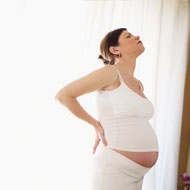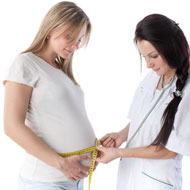- Hip Pain During Pregnancy
- Hot Flashes During Pregnancy
- Heartburn During Pregnancy
- Cold Sores During Pregnancy
- Canker Sores During Pregnancy
- Mouth Sores During Pregnancy
- Tongue Sores During Pregnancy
- Itching During Pregnancy
- IBS During Pregnancy
- Implantation During Pregnancy
- Infections During Pregnancy
- Indigestion During Pregnancy
- Increased Heart Rate During Pregnancy
- Incontinence During Pregnancy
- Hernia During Pregnancy
- Jelly Discharge During Pregnancy
- Jock Itch During Pregnancy
- Sacroiliac Joint During Pregnancy
- Kidney Pain During Pregnancy
- Kidney Failure During Pregnancy
- Kidney Changes During Pregnancy
- Knee Pain During Pregnancy
- Leg Cramps During Pregnancy
- Lower Back Pain During Pregnancy
- Lightheadedness During Pregnancy
- Labia Pain During Pregnancy
- Malnutrition During Pregnancy
- MRSA During Pregnancy
- Mild Cramping During Pregnancy
- Nausea During Pregnancy
- Ligament Pain During Pregnancy
- Muscle Spasms During Pregnancy
- Muscle Pain During Pregnancy
- Neck Pain During Pregnancy
- Night Sweats During Pregnancy
- Nerve Pain During Pregnancy
- Nipple Discharge During Pregnancy
- Nightmares During Pregnancy
- Nipples Burning During Pregnancy
- Nipples Peeling During Pregnancy
- Numb Hands During Pregnancy
- Ovary Pain During Pregnancy
- Ovarian Cyst During Pregnancy
- Ovulation During Pregnancy
- Ovarian Cancer During Pregnancy
- Overheating During Pregnancy
- Overeating During Pregnancy
- Normal Weight Gain During Pregnancy
- Joint Pain During Pregnancy
- Jaw Pain During Pregnancy
- Jaundice During Pregnancy
- Joint Stiffness During Pregnancy
- Ketones in Urine During Pregnancy
- Kidney Infection During Pregnancy
- Low Blood Pressure During Pregnancy
- Loss of Appetite During Pregnancy
- Low Iron During Pregnancy
- Losing Weight During Pregnancy
- Nipple Pain During Pregnancy
- Left Side Pain During Pregnancy
- Lactose Intolerance During Pregnancy
- Moles During Pregnancy
- Leaking & Leg Numbness During Pregnancy
- Labia Varicose Veins During Pregnancy
- Blurred Vision During Pregnancy
- Flu During Pregnancy
- HIV In Pregnancy
- Acne During Pregnancy
- Abdominal Tenderness during Pregnancy
- Swelling During Pregnancy
- Vaginal Swelling during Pregnancy
- Body Aches during Pregnancy
- Body Acne during Pregnancy
- Cervical Fluid during Pregnancy
- Dilation In Pregnancy
- Diverticulitis during pregnancy
- Bleeding During Pregnancy
- Upper abdominal pain during pregnancy
- Abdominal Pain During Pregnancy
- Back and Abdominal Pain During Pregnancy
- Migraines During Pregnancy
- Kidney Stones During Pregnancy
- Arthritis During Pregnancy
- Back Pain During Pregnancy
- Stress During Pregnancy
- Mood Swings During Pregnancy
- Insomnia During Pregnancy
- Bacterial Vaginosis Pregnancy
- Hellp Syndrome Pregnancy
- Epilepsy During Pregnancy
- Pregnancy Placental Abruption
- PTU During Pregnancy
- Posterior Pelvic Pain During Pregnancy
- Diarrhea During Early Pregnancy
- Early Pregnancy Cramping
- Lower Abdominal Pain During Pregnancy
- Menstrual Cramps Pregnancy
- Belly Sizes During Pregnancy
- Gout In Pregnancy
- Diarrhea During First Trimester
- Abdominal Pain During Pregnancy First Trimester
- Vaginal Bleeding Pregnancy Causes
- Frequent Urination During Pregnancy
- Hair Loss During Pregnancy
- Tattoo During Pregnancy
- Vaginal Bleeding During Pregnancy
- Vaginal Discharge During Pregnancy
- Snoring During Pregnancy
- Skin Discoloration During Pregnancy
- Belly Growth During Pregnancy
- Sciatica During Pregnancy
- Shortness of Breath During Pregnancy
- Saliva in Pregnancy
- Premature Rupture Of Membranes In Pregnancy
- Tingling Hands Pregnancy
- Pelvic Girdle Pain During Pregnancy
- Protruding Navel During Pregnancy
- Hemorrhoids During Pregnancy
- Forgetfulness During Pregnancy
- Flatulence During Pregnancy
- Fainting During Pregnancy
- Light-headedness During Pregnancy
- Types of Vaginal Discharge During Pregnancy
- Sciatica Pain Treatment During Pregnancy
- Migraine Headache During Pregnancy
- Migraine Relief During Pregnancy
- Nosebleeds During Pregnancy
- Dysgeusia During Pregnancy
- Bloating During Pregnancy
- Chloasma During Pregnancy
- Fatigue During Pregnancy
- Pitting Edema During Pregnancy
- Mask of Pregnancy
- Spontaneous Abortion
- Causes Of Spontaneous Abortion
- Restless Leg Syndrome During Pregnancy
- Excess Saliva During Pregnancy
- Migraine Treatment During Pregnancy
- High Blood Pressure During Pregnancy
- Sore Abdominal Muscles During Pregnancy
- Symphysis Pubic Dysfunction During Pregnancy
- Treating High Blood Pressure During Pregnancy
- Prugio of Pregnancy
- Hemorrhoid Treatment Pregnancy
- Fighting Pregnancy Fatigue
- Swollen Feet Pregnancy Remedy
- Nosebleed Early Pregnancy
- Vaginal Discharge in Early Pregnancy
- Cervical Dilation Pregnancy
- Clumsiness During Pregnancy
- Dizziness in Pregnancy
- Edema During Pregnancy
- Swollen Ankles During Pregnancy
- Hard Belly During Pregnancy
- Insomnia Early Pregnancy
- Effects of Smoking During Pregnancy
- Smoking During Pregnancy Risks
- Soft Cervix During Pregnancy
- Symptoms Of Depression During Pregnancy
- Weight Gain During Pregnancy
- Depression During Pregnancy
- Alcohol Effects During Pregnancy
- Alcohol During Pregnancy
- Marijuana Smoking During Pregnancy
- Quitting Smoking During Pregnancy
- Smoking During Pregnancy
- Cervix Bleeding Pregnancy
- Closed Cervix Pregnancy
- Stress During Pregnancy Effects
- Reducing Stress During Pregnancy
- Treating Constipation During Pregnancy
- Viral Infection During Pregnancy
- Cervix During Pregnancy
- Open Cervix During Pregnancy
- Small Cervix And Pregnancy
- Swine Flu During Pregnancy
- High Cervix Pregnancy
- Cervix Size During Pregnancy
- Pregnancy Breast Cancer
- Constipation During Pregnancy
- Friable Cervix and Pregnancy
- Checking Cervix During Pregnancy
- Low Cervix During Pregnancy
- Control Weight Gain During Pregnancy
- Weight Gain During Pregnancy Week By Week
- Tooth Decay During Pregnancy
- Stress In Early Pregnancy
- Tooth Extraction During Pregnancy
- Working During Pregnancy
- Toothache During Pregnancy
- Tooth Pain During Pregnancy
- Long Cervix During Pregnancy
- Thin Cervix During Pregnancy
- Cervix Changes In Pregnancy
- Itchy Belly During Pregnancy
- Low Platelets During Pregnancy
- Pregnancy Metallic Taste
- Itchy Skin During Pregnancy
- Brown Discharge During Pregnancy
- Pregnancy Changes
- Chickenpox And Pregnancy
- Cholestasis of Pregnancy
- DVT During Pregnancy
- Fibroid Uterus During Pregnancy
- Fifth Disease during Pregnancy
- Yeast Infection during Pregnancy
- Pelvic Arthropathy During Pregnancy
- Diabetes During Pregnancy
- Cervical Cancer During Pregnancy
- Sexually Transmitted Diseases During Pregnancy
- Thyroid Disease During Pregnancy
- Urinary Tract Infections During Pregnancy
- Hyperthyroid During Pregnancy
- Hypothyroid During Pregnancy
- Placenta During Pregnancy
- Dermatoses Of Pregnancy
- Gestational Trophoblastic Diseases During Pregnancy
- Anaemia During Pregnancy
Pelvic Discomfort During Pregnancy
Most instances of pelvic discomfort during pregnancy are harmless. It is quite natural to experience some amount of pelvic and abdominal pain as the baby develops and grows inside the uterus. Pelvic discomfort in early pregnancy occurs when the embryo attaches itself into the uterine lining.
In the third or fourth month, there may also be a sharp pain in the groin area. This may come and go in brief intervals and may become aggravated when you stand up or move.
The pain may then subside completely after some days, such pain can be worrying, but it is generally not a cause for concern as it occurs due to the stretching and thickening of the uterus muscles in order to support the growing baby.
Reasons for Pelvic Pain in Early Pregnancy
Abdominal pains can also occur due to constipation and flatulence which are a common occurrence during pregnancy. The pressure and bloating may cause discomfort in the lower abdominal and pelvic region. The increasing amount of pressure being exerted on the rectum as a result of the developing baby results in constipation. In addition, the release of hormones that slow down passage of food through the digestive tract also contribute to wind and bloating. The enlargement of the uterus also increases pressure on the intestines and this can lead to gas formation and flatulence. During the later stages of pregnancy, the contractions which occur may also result in some amount of pelvic pain. These are known as Braxton-Hicks contractions and they result from the tightening of the uterus. They are triggered when the baby moves inside the uterus or when the stomach is touched. However, if the pelvic discomfort and contractions become too painful or frequent, medical consultation is recommended.
Conditions for Pelvic Discomfort During Pregnancy
Aches and pains in the pelvic region are experienced by most pregnant women. However, some women suffer from symphysis pubis dysfunction or SPD which is characterized by pain in the pelvic joints. A hormone known as relaxin is produced during pregnancy, which serves to soften the pelvic joints in preparation for the baby’s birth. Those with pelvic joint problems experience increased stretching and softening of the pelvic ligaments as a result of relaxin. Excessive stretching results in pain in the pelvic area. The symptoms of SPD are pain in the lower back, hip, groin and pubic region. A pregnant mother may also experience difficulty in walking or moving her legs, clicking sounds during leg or hip movements, and a sensation of the bones grinding against each other. If such symptoms are experienced, it is advisable to consult your doctor, who will then refer you to an obstetric physiotherapist.


